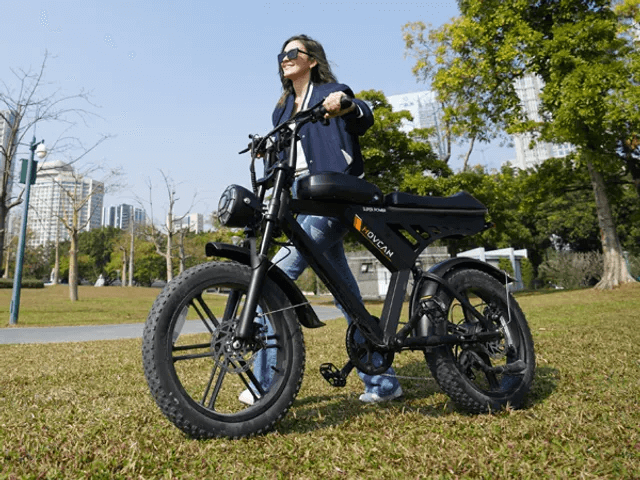Electric bikes have revolutionized urban mobility, recreation, and fitness, offering pedal assistance that makes cycling accessible to more people than ever before. However, not all e-bikes are created equal. Understanding the different e-bike classifications is crucial for selecting the right model, following local regulations, and enjoying your riding experience to the fullest.
Why E-Bike Classifications Matter
E-bike classifications determine where you can legally ride, whether you need a license, insurance requirements, and age restrictions. According to a recent survey, many e-bike owners are unaware of their bike's class and the corresponding regulations, potentially leading to legal issues and safety concerns.
The Three Main E-Bike Classifications
Class 1 E-Bikes: Pedal-Assist Only
Class 1 e-bikes feature:
- Pedal-assist only (no throttle)
- Motor assistance up to 20 mph (32 km/h)
- Motor that only engages when the rider is pedaling
- Typically 250-750W motors
Class 1 e-bikes offer the greatest access to infrastructure, being allowed on most bike paths, lanes, and trails where traditional bicycles are permitted. Our MoVcan Explorer series exemplifies the Class 1 category, designed for versatility and maximum legal access to riding areas.
Class 2 E-Bikes: Throttle-Assisted
Class 2 e-bikes include:
- Throttle-assisted capability (can operate without pedaling)
- Maximum assisted speed of 20 mph (32 km/h)
- May also include pedal-assist functionality
- Typically 250-750W motors
The throttle functionality makes Class 2 models perfect for riders who may need occasional breaks from pedaling or those with physical limitations. Studies show that Class 2 e-bikes face more restrictions in certain municipalities, particularly on multi-use trails and in some parks.
Class 3 E-Bikes: Speed Pedelecs
Class 3 e-bikes, also known as speed pedelecs, feature:
- Pedal-assist only (some regions allow throttles on Class 3)
- Motor assistance up to 28 mph (45 km/h)
- Usually equipped with speedometers
- May require helmets by law in most jurisdictions
- Typically 500-750W motors
Class 3 e-bikes are built for commuters who want to cover longer distances quickly. These models face more restrictions and are often limited to on-road use. Our MoVcan Commuter Pro delivers exceptional Class 3 performance for the urban professional seeking to replace car trips with e-bike commuting.
Regional Variations in E-Bike Classifications
E-bike classifications and regulations vary significantly around the world:
United States
The three-class system is widely adopted, though specific regulations vary by state. California, Utah, and Colorado were early adopters of the three-class framework that has become the standard.
European Union
The EU uses a different system:
- L1e-A: Pedal-assisted cycles with max 25 km/h assistance
- L1e-B: Cycles with max 45 km/h assistance (requires license, insurance)
Canada
Canadian regulations vary by province, with most aligning closer to the U.S. system, though with some unique variations. Check your provincial regulations before purchasing.
How to Identify Your E-Bike's Classification
All MoVcan e-bikes come with clear labeling of their classification. Look for:
- A permanent label on the frame
- Information in the user manual
- Details on the display interface
MoVcan's Approach to E-Bike Classifications
At MoVcan, we design our e-bikes with classification standards in mind while maximizing performance within those parameters. Our engineering team has developed proprietary technology that delivers:
- Efficient motor systems that extend battery life
- Natural-feeling assistance that enhances rather than overpowers your ride
- Customizable settings to adjust assistance levels
Visit our technology page to learn more about the innovations that set MoVcan e-bikes apart from competitors.
Choosing the Right E-Bike Classification for Your Needs
Consider these factors when selecting an e-bike class:
| Factor | Recommended Class |
|---|---|
| Commuting on roads | Class 3 |
| Trail riding | Class 1 |
| Mixed-use riding | Class 1 or 2 |
| Riders with mobility issues | Class 2 |
| Maximum range desired | Class 1 |
Future of E-Bike Classifications
As e-bikes continue to gain popularity, classification systems are evolving. We're seeing trends toward:
- More nuanced classifications that account for emerging technologies
- Standardization across regions to simplify manufacturing and compliance
- Specialized categories for cargo e-bikes and other utility models
MoVcan's Commitment to Compliance and Safety
All MoVcan e-bikes are designed to meet or exceed safety standards for their respective classifications. We continually update our models to remain compliant with changing regulations while delivering the performance our customers expect.
Conclusion
Understanding e-bike classifications helps ensure you select the right model for your needs, ride legally, and maximize your enjoyment. MoVcan is committed to providing clear information about our e-bike classifications and helping customers navigate the sometimes complex regulatory landscape.
For personalized guidance on selecting the perfect e-bike classification for your specific needs, contact our customer support team or visit one of our authorized dealers.



Need help or have questions?
Contact our support team at support@movcan-bike.com
Movcan | Ride Smart. Ride Confident.
Share:
Perfect Your E-Bike's Performance: The Complete Derailleur Adjustment Guide
E-Bike Tire Sizing Guide: Finding Your Perfect Fit